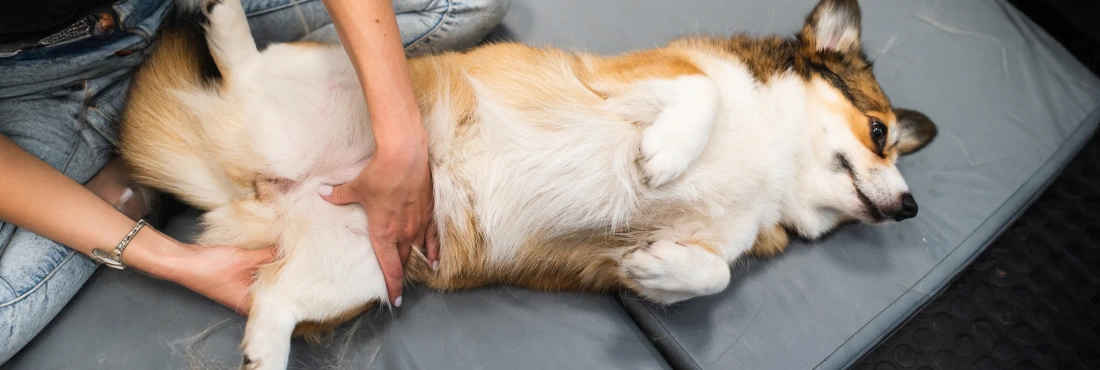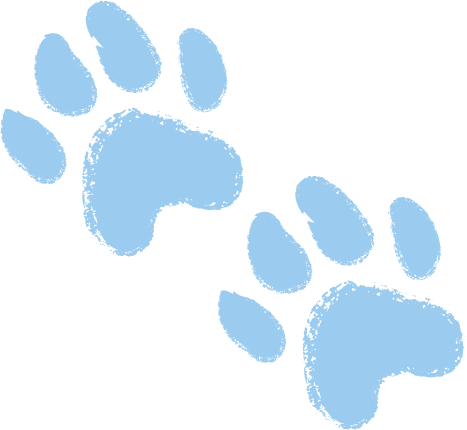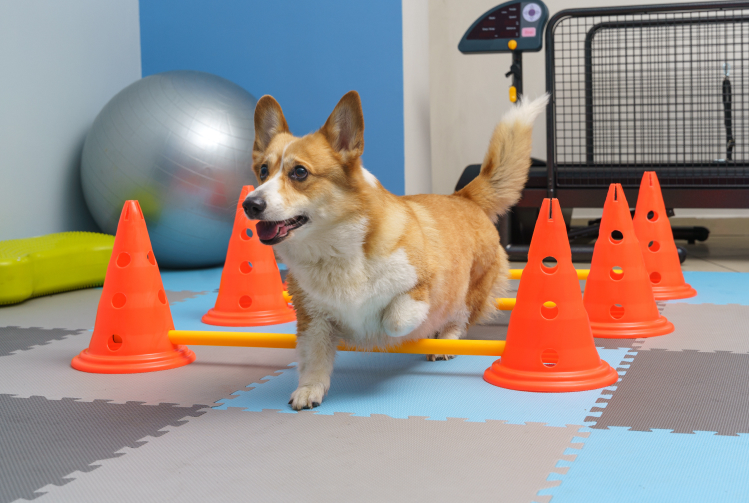Dog Physiotherapy in Singapore

What Is Animal Physiotherapy?
Animal physiotherapy is a specialised field of veterinary medicine that uses non-invasive techniques to address physical impairments in pets. It focuses on restoring mobility, improving muscle strength, and enhancing overall movement.
Through methods such as manual therapy, therapeutic exercises, and hydrotherapy, physiotherapy helps reduce pain, improve coordination, and restore normal muscle function.
Benefits of Physiotherapy for Dogs
Physiotherapy offers a wide range of benefits for dogs, addressing both post-operative recovery and chronic conditions.
Non-Invasive
Physiotherapy uses gentle, hands-on techniques that do not require surgery or medication. This makes it a safe and stress-free option, particularly for dogs who may be sensitive or anxious about medical procedures.
Pain Relief and Improved Comfort
Joint and soft tissue mobilisation, low-level laser therapy and structured therapeutic massage and exercise programmes help relieve pain and improve comfort for your pet.
Faster Recovery After Injury or Surgery
Tailored rehabilitation plans support quicker healing after injury or surgery, promoting quicker return to normal activity following surgery or trauma.
Improved Joint Function and Strength
With regular physiotherapy sessions, pets can develop stronger muscles, improving joint flexibility and better physical stability, reducing the likelihood of future injuries.
Enhanced Quality of Life, Especially for Senior Dogs
Physiotherapy helps maintain mobility, manage pain and support independence, significantly improving quality of life and daily comfort, especially for ageing pets.
Conditions That Benefit From Dog Physiotherapy
Physiotherapy is a valuable tool for improving the quality of life for pets with a wide range of issues, including:
Orthopaedic Conditions
Physiotherapy helps manage pain, restore joint function and improve mobility for issues like hip or elbow dysplasia, kneecap displacement, arthritis and back pain.
Neurological Issues
Targeted therapy supports nerve functions and coordination for conditions like intervertebral disc disease (IVDD), spinal cord injuries and nerve damage.
Post-Surgical Recovery
Physiotherapy aids in reducing swelling, restoring strength and speeding up functional recovery following post-surgical procedures such as TPLP or fracture repair.
Age-Related Conditions
Senior dogs often face chronic pain and reduced mobility. Physiotherapy can help maintain their movement, independence and overall physical health as they age.


Common Physiotherapy Techniques and Exercises for Animals
At Advanced Animal Rehabilitation, we offer a variety of non-invasive physiotherapy techniques to help your pet recover from injury, manage pain and improve mobility. Our vet rehab clinic offers:
Hydrotherapy / Underwater Treadmill
Hydrotherapy is a low-impact exercise that is commonly used for post-surgical recovery and for dogs with mobility issues. It supports the joints while building muscle strength and endurance.
Manual Therapy & Massage
Manual therapy is a hands-on massage technique that helps improve blood flow, relieve muscle tension and promote relaxation and healing for your pet’s body.
Laser and PEMF Therapy
Laser therapy and pulsed electromagnetic field (PEMF) therapy are non-invasive treatments that stimulate cellular repair, improve circulation, and help relieve pain and inflammation in dogs.
Electrotherapy
Electrotherapy delivers controlled electrical stimulation to activate muscles, ease pain and boost circulation—particularly helpful during post-operative rehabilitation.
Canine Rehab Physical Exercises
Rehabilitation exercises for dogs such as sit-to-stand drills, pole weaving, and balance pad training help dogs rebuild strength, improve coordination, and regain functional mobility.
Stretching Exercises
Stretching exercises help improve your pet’s flexibility, extend the range of motion and reduce stiffness. Exercises are tailored to target key areas like the back, neck, and limbs, supporting overall mobility and well-being.
What to Expect at a Physiotherapy Clinic
When you arrive for your pet's physiotherapy session, our goal is to make the experience as comfortable and stress-free as possible. Here is a general overview of what the process involves:
Initial Consultation and Physical Assessment
We begin by reviewing your pet's medical history and conducting a hands-on assessment to evaluate their mobility, muscle condition, and any areas of discomfort. To better understand your pet's needs, our rehabilitation veterinarian will ask you questions about their home environment, diet, medications, pre-existing conditions and overall temperament.
Customised Rehabilitation Plan
Based on the findings from the consultation, we develop a personalised rehabilitation plan tailored to your pet’s specific needs and recovery goals. Each session may include a combination of massage therapy, manual therapy, hydrotherapy, laser treatment and other rehab therapies. We also provide guidance on the ideal session frequency, ensuring your pet receives consistent, effective care for a full and comfortable recovery.
Progress Check and Follow-Up
We monitor your pet’s progress through regular sessions, mobility assessments, and your feedback to ensure the rehabilitation plan stays effective. Follow-up care—including continued sessions and tailored home exercises—helps support long-term recovery, maintain mobility, and reduce the risk of re-injury.
Advanced Animal Rehabilitation for your Dog's Physiotherapy
At Advanced Animal Rehabilitation, we provide tailored canine physiotherapy services such as exercises, hydrotherapy, laser therapy and electrotherapy. Through our partnership with Advanced Vetcare, we ensure seamless referrals, coordinated care and consistent communication for your dog’s smooth recovery.


Frequently Asked Questions (FAQs)
Do pet insurance policies cover dog physiotherapy?
Coverage depends on your insurance provider and plan. It is best to check directly with your insurer.
When should my dog start physiotherapy after surgery?
Physiotherapy usually begins once your vet approves, often shortly after surgery, to support healing and mobility.
Can I do these exercises with my dog at home?
Many exercises can be safely done at home under professional guidance to complement clinic sessions.
Is dog physiotherapy safe for older pets?
Yes, dog physiotherapy is non-invasive and is designed to be gentle and suitable for senior pets with age-related mobility issues.
Is physiotherapy painful or stressful for pets?
No, physiotherapy is tailored to keep your pet comfortable and stress-free, with gradual, safe exercises that promote steady physical improvement.
Can physiotherapy be combined with medication or hydrotherapy?
Combining physiotherapy with other treatments, like medication or hydrotherapy, is common and often recommended for better results. The specific therapies used will be determined after a thorough assessment of your pet's needs.
Personalised Care
Holistic Approach
Safe & Clean Environment




